All photographs are my own and can not be copied or used without permission.
These currently posted images are mainly from the Kenema Area in the Eastern Province of Sierra Leone where we lived. Many are of my Dama Road neighbors, and of our students at the Holy Rosary Secondary School and at the Kenema Teacher's Training College. There are many also from area villages such as Vaama, or Tokpombu, or Bitema, or Gbenderoo, or Foindu. These villages all with less than 100 people in them, all are in the Nongowa Chiefdom in the Kenema District of the Eastern Province of Sierra Leone. All were in walking distance ( 6 miles) of our home. I was lucky to have friends while I lived in Kenema who were willing to show me their villages and teach me about their ways. Kenema was a big town even in those days. Susan and I lived on the HRSS school compound. To this day I appreciate the warmth and friendship of my many friends including Siaka Kpaka, Patrick Garlough, Mama Hokey, the Garlough family (Pa Garlough and his wife Sabina), schoolboys Senesi Edward Lahai, Momo Vandi, and Mansaray Vandi, Mrs. Porter (and her son Bankole), Pa Sam of Vaama (and his wife Massa), and also of our many students both at Kenema Holy Rosary Secondary School (HRSS) and at the Kenema Teacher's Training College. One of our mentors while there was a woman named Mama Hokey Kemoh. She lived across from us at #55 Dama Road. In those days she was the area leader of the Bondo Society (Sowei). She was a regal woman who befriended us, joked with us, and taught us about what it was like to be a Mende woman. Many a night was spent on her veranda listening to a woman named Bonya lead beautiful Mende songs, while other women responded with incredibly beautiful harmony. Some nights this would be to a full moon, and other nights there would be rain beating down on the metal roof. It was Mama Hokey who would send for us and allow us to be there and listen, because she knew how very much I loved the wonderful songs and the very haunting harmonies. In many respects Mama Hokey was a surrogate parent to us while we lived there. In those days I smoked a pipe and thus she nicknamed me "Shmoku Pipee." Mama Hokey also nicknamed a young child living in her household as Hokey "Kpokpoi" - and called her my sister. My sense was that the word kpokpoi (?sp) meant chin in Mende and that Mama Hokey felt that this young girl with the prominent chin looked like me. I am aware as of 2008 that Mama Hokey is still alive, living back in her village of Foindu (Nongowa), but is blind.
There are also many pictures from other parts of the country including my two trips to the Loma Mountains and Bintimani, with many photos from the Kuranko village of Sokurella (?sp) at the base of Bintimani. I made two difficult treks to this area in March 1969 and again in March 1970 to hike in the Loma Mountain range - the highest mountains in West Africa outside of Mt. Cameroon.
In the period 1968 - 70 in Sierra Leone there was some unrest between the two major political parties the SLPP and the APC. We certainly were aware of the issues. However in the last two decades Sierra Leone had a very long, horrendous and very tragic war in which horrific abuses were perpertrated such as the use of child soldiers, mutilations, rape as a politcal policy, this all in a ten years downslide for which, even with the tremendous resilience of its people, may take generations to recover. Sierra Leoneans are indeed a resilient people. They will succeed in rebuilding this once proud and wonderful country. However a generation has been without regular education, has been disrupted by the depravity of the horrible war, and has been dispersed to other parts of the world.
In way of explanation the word BONDO refers to the women's secret society in the area, a society that trained young female initiates to be responsible women in the society. The comprable men's society in our area (Mende) was the PORO society. BINTIMANI is a mountain in the Northern Province of Sierra Leone in the mountain range known as the Loma Mountains. In March of 1969 and again in 1970 I hiked in these mountains and stayed in the remote village of Sokurella at the base of Mt. Bintimani. Bintimani is the highest mountain in West Africa outside of Mt. Cameroon. KENEMA was the town where we lived while in the Peace Corps. HRSS refers to the Holy Rosary Secondary School, the school that we were assigned to and where Susan taught English and history, and where I taught math and science, and was assigned to be the netball coach. TTC refers to the teacher's training college in Kenema that we also taught at. I suspect that many of our students are now important leaders in the Sierra Leone community. Then there are the many spirits (called Devils) such as the black raffia BONDO Devil, symbolizing the women's Bondu Society, GOBOI (Mende) and somewhat wild and frenzied secular men's devil, JOBAI (Mende) - also a men's secular devil. I ask any of my Mende friends to excuse any misspellings. I welcome any corrections since it has been 40 years since I have walked in Mendeline. MENDE refers to one of the major ethnic groups in Sierra Leone. We lived in their area. KURANKO refers to a small ethnic group that lived around the Loma Mountains - the village of Sokurella was a Kuranko village. LIMBA is another ethnic group found in Sierra Leone. DAMA ROAD was the road that we lived on and where many of our neighbors and friends lived (this was in Kenema and was a road that headed to Dama Chiefdom). NONGOWA refers to the chiefdom where we lived and where Kenema was the capital.
Lastly let me thank the Sisters of the Holy Rosary who chose us to be part of the first faculty of the Kenema Holy Rosary Secondary School in 1968, and who tolerated having a non-Catholic man teaching on the compound during our two memorable years there. My most memorable teacher colleague among the Sisters was Sister Adrian (Kathleen Toland) who had been in Nigeria before coming to Sierra Leone. Also Sister Mary Ibar (now Sister Celia Doyle) who came in our second year and taught math and science (at least this is what I remember). Both these women were truly dedicated to their teaching and to the students that they taught. Both seemed to have their purpose in perspective and understood that change was in the wind in the 1960's and that Sierra Leone was emerging from its colonial past as it adjusted to Independence. These two dedicated women were able to be flexible and see in their African young women both hope and promise. These were two very Holy women in the best sense of this term.
Saturday, November 15, 2008
TROUBLE IN KENEMA
Although for the most part Sierra Leone was a peaceful country while we lived there, there was a time, late in our first year, that some political fighting took place. My sense was that our area of the Eastern Province was loyal to the political party known as the Sierra Leone Peoples Party (SLPP). In the April prior to our arrival in-country there has been a series of coups and eventually a leader named Siaka Stevens and his All People's Party (APC) took over. Although the allegiances were somewhat vague and indistinct as I saw them, the SLPP seemed to have its support amongst the Mende predominantly, and the APC was predominantly supported by the northern Temne. Again this was not cut and dry - but from an outsider's point of view this was how it seemed. And as we listened to local people talk politics (this was done with considerable care - mind you) there always seemed an undercurrent of grumbling and displeasure expressed by the SLPP loyalists in our area. This all culminated in a week of hostility. I remember it so well. I had gone downtown to the post office to mail some letters home. That day the post master pulled me aside and into his office expressing his need to talk to me immediately. This was unusual and had never happened before. I knew the postmaster - he was an older man who had been a long time civil servant (his names escapes me). He closed the door behind him and then with horror on his face said to me that I had to leave town immediately and go back to my house. When I questioned him as to what was going on he said he could not tell me and again emphasized that I had to leave Kenema immediately. I headed home after posting my letters - a distance of about 3 miles. Very soon thereafter it became very clear why the postmaster had been so very concerned - it was for my safety. Within one hour of my leaving town - fighting broke out, cars were tipped over and burned, houses were ransacked and burned, bands of men (it was unclear of what loyalties) were rumored to be roaming the streets, and people were rushing by our house with whatever belongings they could carry, heading for the bush to escape any harm. From our house which sat above town I could see a number of fires, and could hear noise of fighting. At one point early on Jim Alrutz, the Peace Corps Eastern Province director came by to see if we were ok and warn us to stay inside while the trouble was going on. For the most part our area was abandoned as those who could fled to the bush, and others just stayed inside their homes. When night came, the local Men's Society (called the Poro Society) came out or so it was rumored. As they marched by our house and through our Dama Rd neighborhood they made strange sounds and threw stones on the metal roofs - their sound was frightening. I did go out and hide in the bushes near our house to try and get a better view of what was going on - but it was pitch black out and I could only hear the whoosh as a multitude of Poro members passed heading to Town. All week rumors flew as to what was going on. Schools closed. Our school TTC boarders hunkered down fearful for their families. However Susan and I were never threatened. This was a local SLPP vs. APC issue - and we - as outsiders were for the most part ignored. After a week of daily trouble things quieted down as fast as they began. Rumors continued to fly. Schools re-opened, and downtown, everything went back to normal. A few houses were now burnt out shells. There were more soldiers about town. But things rapidly otherwise returned to normal. I went back to the postmaster to thank him for his concern.
Subscribe to:
Post Comments (Atom)





































































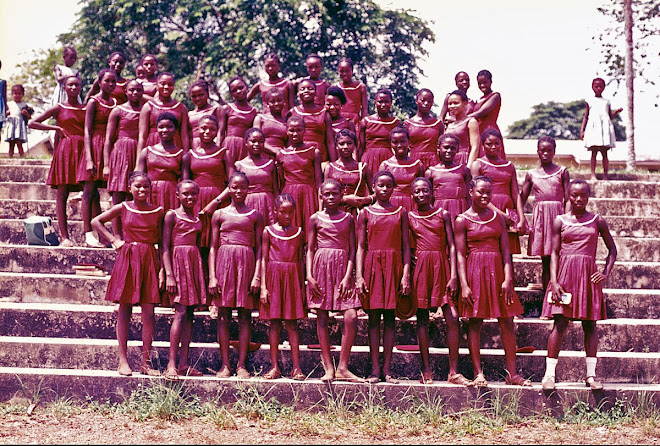.jpg)



























































































































































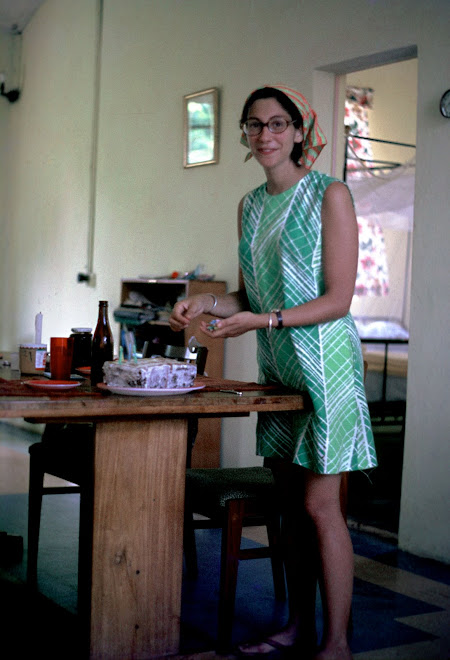
































































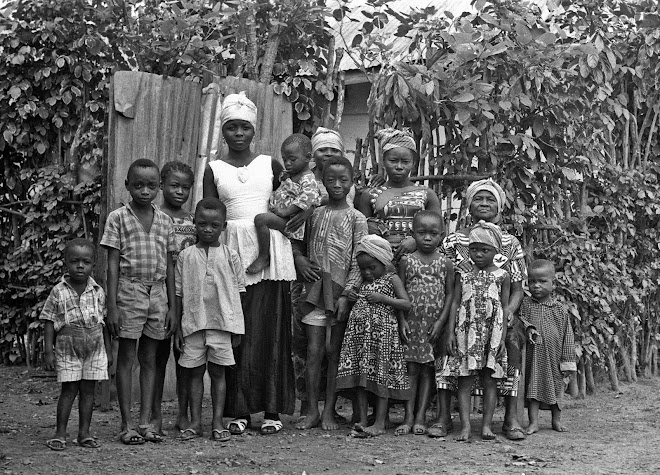.jpg)





































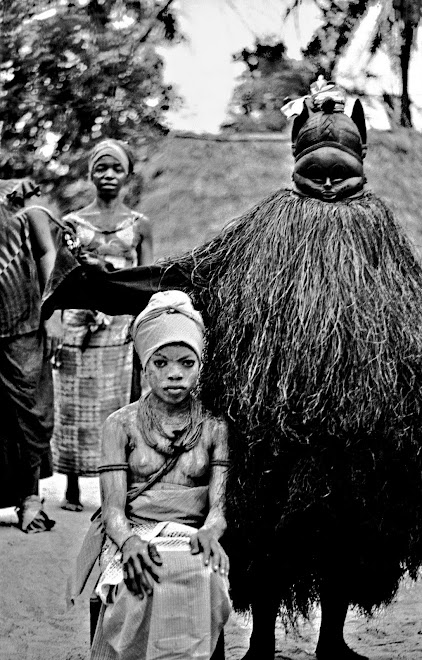-1969.jpg)

















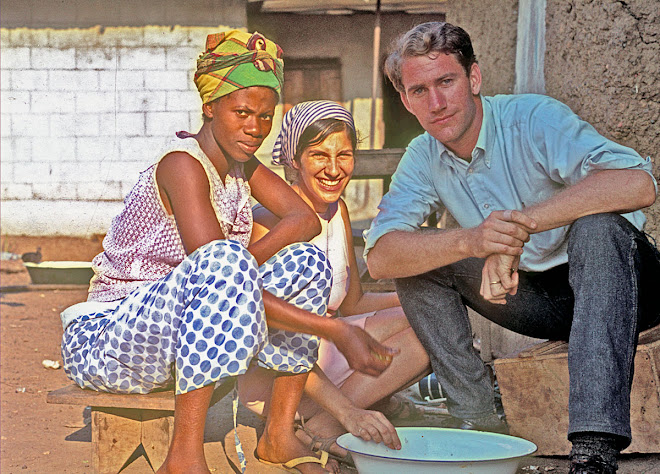













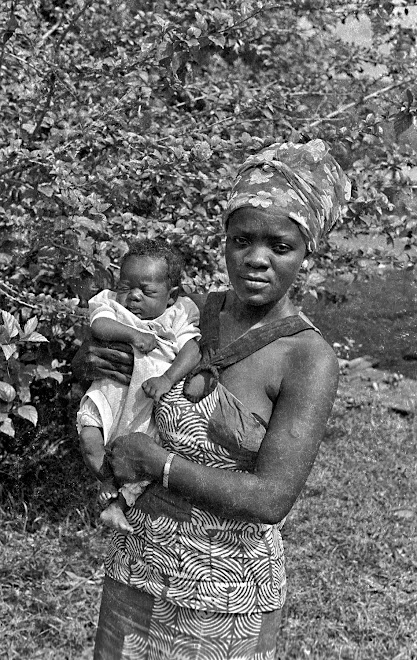-w--child.jpg)



No comments:
Post a Comment